Over the past decade, transaction speed and scaling have been significant problems in crypto networks. This need for enhanced transaction speed and scalability has catalyzed the development of layer-2 projects. These networks are formed on an existing blockchain, and they solve scalability and transaction speed issues.
This article explores the top 10 layer-2 crypto projects in 2024. It will review their tokens and features and provide a guide on buying them on CoinEx.
What Are Layer-2 Networks?
Layer-2 is an additional framework or protocol built on an existing blockchain system. Its primary objective is to solve the transaction speed and scaling problems.
This sentence is awkwardly phrased and somewhat unclear. A clearer version might be, “However, Bitcoin and Ethereum still struggle to handle thousands of transactions per second (TPS), a limitation that hinders their long-term advancement. Thus, a greater throughput is needed for these networks to become more widely adopted and used in everyday applications.
Layer-2 protocols allow transactions and activities on the blockchain to occur independently of the layer 1 (main chain) framework. These protocols are sometimes called “off-chain” scaling options because of their specific ability.
One of the most significant benefits of utilizing off-chain solutions is that the main chain does not have to undergo any structural changes. This is because the second layer is added as an additional layer.
Consequently, layer two solutions can provide large throughput without compromising the network’s security.
Top 10 Layer-2 Crypto Projects
Arbitrum
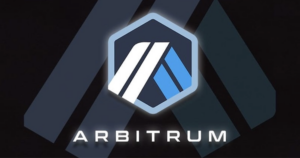
Arbitrum is an effective solution that intends to enhance the efficiency of Ethereum transactions while reducing the associated expenses. Application developers deploy Arbitrum for simple dApps creation with Arbitrum Rollup and AnyTrust mechanisms.
Arbitrum has had its flagship chain, Arbitrum One, since 2021. Almost immediately after this, Arbitrum Nova, a distinct AnyTrust chain designed for extremely low-cost transactions, was introduced.
In August of 2022, Arbitrum One was upgraded to the Arbitrum Nitro stack, which also brought about a scaling capability that was seven to ten times more than before.
Features
Arbitrum offers various L2 scaling solutions, one of which is optimistic rollups. These technologies allow smart contracts that operate on Ethereum to scale on the Ethereum mainchain by exchanging messages with other smart contracts on Ethereum.
More features are mentioned below:
- Holders can send and receive ARB tokens securely and quickly.
- Arbitrum provides various programming languages and seamless interaction with existing Ethereum DApps.
- Engaging with the Arbitrum community and persuading ARB holders to delegate their votes to you are two ways to become an Arbitrum DAO delegate. You may also accomplish this by holding ARB yourself.
- Some governance proposals can affect the operation and development of the Arbitrum One and Arbitrum Nova chains. Users with ARB tokens can vote on these proposals. These include suggestions for improving the chain and how the funds within the DAO Treasury should be utilized.
Overview of ARB
ARB is an ERC-20 governance token that enables holders to participate in the protocol. The Arbitrum DAO’s on-chain governance protocol is accessible to ARB holders.
A smart contract on Arbitrum One, a Layer 2 Arbitrum rollup chain, mints the ARB token. The Arbitrum DAO is accountable for managing the governance protocol outlined in the Constitution and the technologies that the DAO governs.
Tokenomics
- Total supply: 10 billion
- Market capitalization: $2.38 billion
- Inflation Rate: The token’s maximum yearly inflation rate is 2%, ensuring a gradual increase in the token supply over time.
- Investors receive 17.53%
- DAOs in the Arbitrum ecosystem: 1.13%
- Individual wallets: 11.62%
- DAO Treasury: 42.78%
- Team and future team plus advisors: 26.94%
Polygon
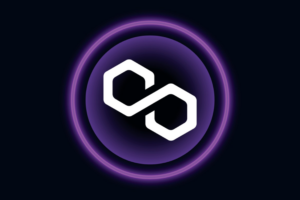
Polygon, earlier called Matic Network, is a scaling solution with several resources for making transactions on blockchain networks faster, cheaper, and less complicated. Polygon is a layer-2 network that acts as an additional layer on top of Ethereum and does not intend to change the original blockchain layer implemented.
It also provides a more straightforward framework for the creation of interconnected networks. Polygon’s goal is to encourage developers to put more appealing apps to market and to assist Ethereum in scale, security, efficiency, and utility.
Features
Polygon provides scalable solutions by processing transactions on different sidechains within the blockchain. Additionally, compared to Ethereum’s average transaction fee, the fees for transactions on Polygon are significantly lower, costing only a few pennies.
More features are mentioned below:
- To provide customers with the most suitable scaling option for their applications, Polygon has built several protocols offering various zero-knowledge proofs (zk).
- Polygon offers integration solutions, including zk rollups, optimistic rollups, proof-of-stake (PoS) blockchain bridges, and plasma sidechains.
- Along with the main Ethereum blockchain, it runs a parallel blockchain that is much faster. To utilize it, you can transfer a portion of your cryptocurrency holdings to Polygon, allowing you to access numerous popular crypto applications previously available only on the main Ethereum blockchain.
- By separating transactions from the primary blockchain, the technology known as Polygon makes Ethereum more efficient.
- Holding and staking MATIC allows users to vote on network enhancements—the amount of MATIC cryptocurrency a user stakes determines the number of votes they can cast.
Overview of MATIC
MATIC is the native token of the Polygon ecosystem. It assists in different network functions and can be used to stake and pay transaction fees.
Users can gain MATIC tokens by helping the Polygon network with computing resources and services. One way to achieve this goal is to execute smart contracts on the network or validate transactions.
Tokenomics
- Total supply: 10 billion
- Market capitalization: $5.34 billion
- Private Sale tokens: 3.80%
- Seed Round: Sale conducted at a rate of 1 MATIC = 0.00079 USD and raised a total of USD 165,000, selling 2.09% of the total token supply
- Early Supporters: Sale conducted at a rate of 1 MATIC = 0.00263 USD and raised a total of USD 450,000, selling 1.71% of the total token supply
- Launchpad Sale tokens: 19%
- Team tokens: 16%
- Advisors tokens: 4%
- Network Operations tokens: 12%
- Foundation tokens: 21.86%
- Ecosystem tokens: 23.33%
Dymension
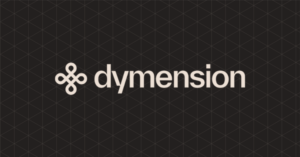
Dymension is a modular and completely decentralized blockchain solution for RollApp development characterized by high speed, scalability, and interaction with similar systems.
It is intended to solve blockchain technology’s scaling trilemma, providing developers with an effective and versatile toolset for creating various decentralized applications. It employs the Delegated Proof-of-Stake (DPoS) consensus process, through which users can let other users hold their tokens to protect the network and earn some income.
Features
RollApps are applications built on a blockchain that can be deployed quickly and easily adapted for use in certain functions. The Dymension network is designed to develop and facilitate data transmission between RollApps.
More features are mentioned below:
- The RollApp Development Kit (RDK) is a set of tools comparable to the Cosmos Software Development Kit (SDK), enabling developers to develop and deploy RollApps effectively.
- It enhances the deployment and security of RollApps through the RollApp Virtual Machine (RVM).
- Traders are connected through automated market makers (AMM), which also helps to reduce slippage and offers privacy. Users can earn certain benefits by providing services such as price discovery and routing data feeds.
- As the next step in developing the app-chain theory, Dymension is a Cosmos SDK chain based on TenderMint.
- The base layer that Dymension offers and the IBC communication that it enables between all RollApps built on its stack are both provided by Dymension.
- Dymension aims to scale a network of RollApps based on their capabilities.
- Dymension Hub is a settlement layer and hub for Layer 2 RollApps, which enables secure communication and shared liquidity. It also acts as a hub for distributed applications.
- DYM tokens can be utilized inside the framework of the Automated Market Maker that is integrated into the hub that Dymension provides. Token holders can contribute to liquidity pools, which could result in acquiring rewards for providing liquidity and facilitating efficient asset exchange and price discovery within the ecosystem.
Overview of DYM
The native cryptocurrency of the Dymension ecosystem is the DYM token. The DYM is a multifunctional and essential component of the Dymension ecosystem. It serves multiple purposes, including managing the network’s security, implementing a governance system, and facilitating compatibility with other blockchain networks.
It gives the token holders rights for governance, allowing them to participate in the decision-making processes related to developing the Dymension ecosystem in the future. Holders can vote on ideas about network upgrades, policy changes, and the distribution of resources within the ecosystem.
Tokenomics
- Total supply: 1.03 billion
- Market capitalization: $263.19 million
- Public allocation: 8%
- Ecosystem and R&D: 20%
- Incentives Manager [Onchain DAO]: 33%
- Community Pool [Onchain DAO]: 5%
- Backers: 14%
- Core Contributing Team: 20%
Optimism
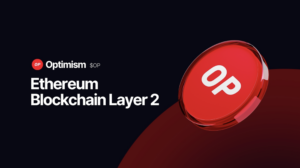
Through its connection to Ethereum, OP Mainnet functions as an EVM equivalent Layer 2 blockchain. Like OP Mainnet, the OP Stack is a standardized, shared, open-source development stack.
OP Stack chains that are part of the Superchain network share a bridging protocol, governance system, and other components with one another.
The operation of optimism-based networks is referred to as “optimistic rollups.” This technology performs transactions off-chain in batches, slashing transaction costs and assisting in minimizing network traffic.
Features
Optimism is an Ethereum-based project focused on implementing a new economic system with better scalability, fairness, and decentralization.
More features are mentioned below:
- Optimism uses roll-up technology, combining many of Ethereum’s Layer 1 transactions into one transaction. This allows the transaction fee to be effectively distributed among all participants.
- Because it is built from the ground up to be compatible with Ethereum, everything functions precisely like it would on Ethereum. This allows developers to instantly begin innovating on Optimism without learning new programming languages or altering existing code.
- Because OP Mainnet is comparable to EVM, the gas utilized by a transaction on OP Mainnet is identical to the gas used by the same transaction on Ethereum.
- OP tokens are used as an incentive to encourage various behaviors within the ecosystem that benefit its growth, health, and security.
- Staking OP tokens contributes to securing the network and participating in its activities. Holders of Optimism tokens can obtain rewards in the form of transaction fees or other incentives.
Overview of OP
The OP is the native utility token of the Optimism ecosystem. It was developed to serve as an essential component in the governance and operation. With the help of Optimistic Rollups, Optimism improves Ethereum’s functionality by enabling transactions at a much faster and affordable speed.
Additionally, it inherits the security qualities inherent to Ethereum’s foundation layer.
Token holders can vote on important decisions, proposals, and protocol updates through OP, primarily utilized for governance reasons inside the Optimism Collective. This democratic approach allows the Optimism network’s community of users, developers, and stakeholders to guide the network’s development and future orientation.
Tokenomics
- Total supply: 4.29 billion
- Market capitalization: $1.98 billion
- Public Goods Funding: 20%
- Ecosystem Fund: 25%
- Retroactive Public Goods Funding (RetroPGF): 20%
- User airdrops: 19%
- Core contributors: 19%
- Investors: 17%
Conclusion
Layer-2 protocols are a game changer due to their solutions related to scalability and transaction speeds. The above article explores some of the top layer-2 networks and their tokens. Provide a clearer, step-by-step guide that directly leads the reader through the process without assuming prior knowledge of the CoinEx platform.
Lastly, remember that this is not financial advice. This article is just an overview of the tokens of the best layer-2 crypto projects in 2024. So, do your research before investing in such coins.
To read more informative blogs like this, head to our blog section and learn more about trending cryptocurrencies.
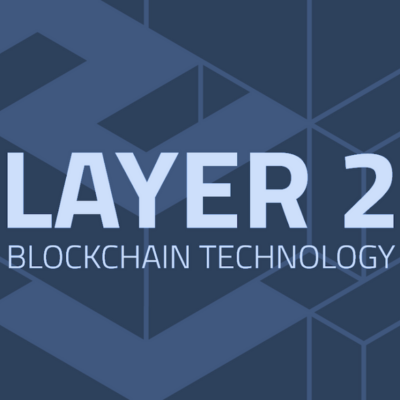
Leave a Reply